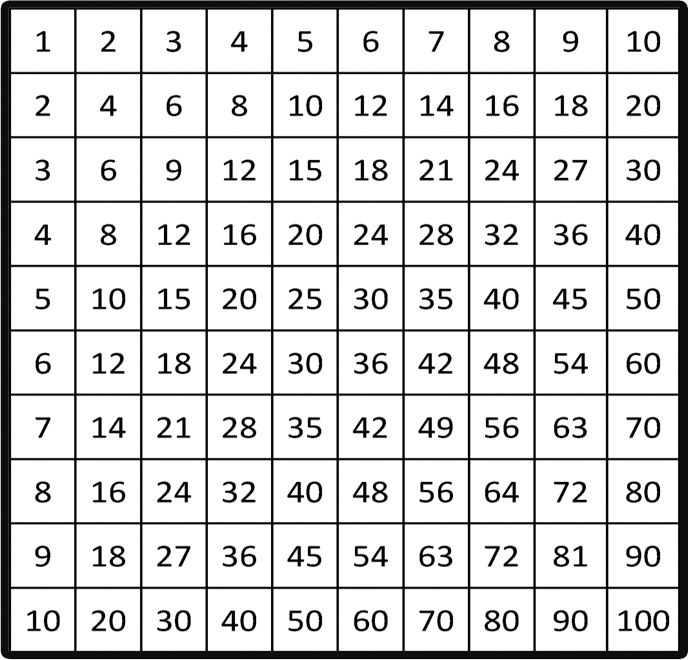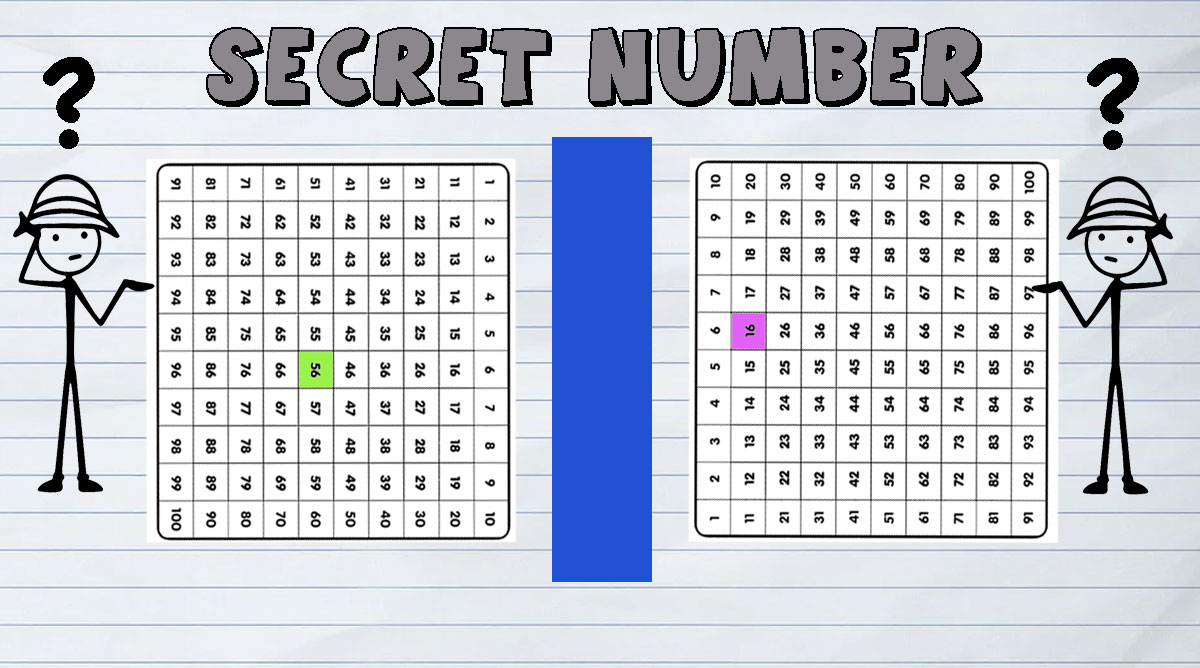The secret number is a two-player (or two groups) game that could also be played by teachers and students in their online meetings as a fun game. The teacher will be player one and the students will be the player two.
Each of the players has a table in front of them, a print-out or picture on a computer or iPad that they can draw on. If you want to focus on multiplication facts, division facts and factors you can use the first table. If you want to mix it up or you are playing with students grades 1-2 then you can use the second table.


The players select one number from their table and mark it in some way. (color, circle) They hide it from the opponent. They take turns asking each other questions that will help them figure out the other player’s number. (roll a dice for who asks first) The player that guesses the opponent’s number first wins. You can also decide that only a specific number of questions are allowed. The players can continue the game by selecting new numbers and keeping score of the correct guesses.
Having the table in front of them helps the players eliminate numbers and choose the correct questions to ask.
Only Yes/No questions allowed.
100 is excluded which means it cannot be selected for obvious reasons. (You may want to ask the students why is 100 out.)
Only two “Is it greater than …?” questions allowed. (those are the tricky ones)
Some questions that players might ask depending on their grade.
- Is it a double-digit number? (or single-digit)
- Is it an even number?
- Is it an odd number?
- Do the digits add up to 12?
- Does it have 0 in ones?
- Is it a multiple of 5? ( or 3,4,6,7,…)
- Is it a square number?
- Is it a prime number?
- Is it divisible by ..?
- Is it greater than ?
- Is it less than…?
- Is it a factor of ..?
- Is the tens’ digit greater than the ones’ digit?
- Are the ones’ and tens’ digits the same?
- Are the tens an even number?
- Are both digits odd?
- Is it a power of 2?
- Is it a cube number?
- Is it a number from the Fibonacci series?
- and more
Selecting and asking this kind of questions requires critical and strategic thinking and encourages the use of mathematical language.
Questions that cannot be asked.
Does it start with …
Does it end with ..?
Does it have …. at the ones?
Is it the sum/product of ….?
Playing with the whole class or a group online, choosing who will ask the question can be tricky. You can choose randomly among the students who have a question in mind by rolling a dice, drawing names from a hat, and with other creative ways that teachers find to fairly pick students.
If you are playing this game with students online, you can start one day and continue the next. Let students think which is the best question to ask and maybe vote on it. It can become a fun long game.
Here are the two different tables to choose from. Add the table in a google slide and share with the students or share the screen.

